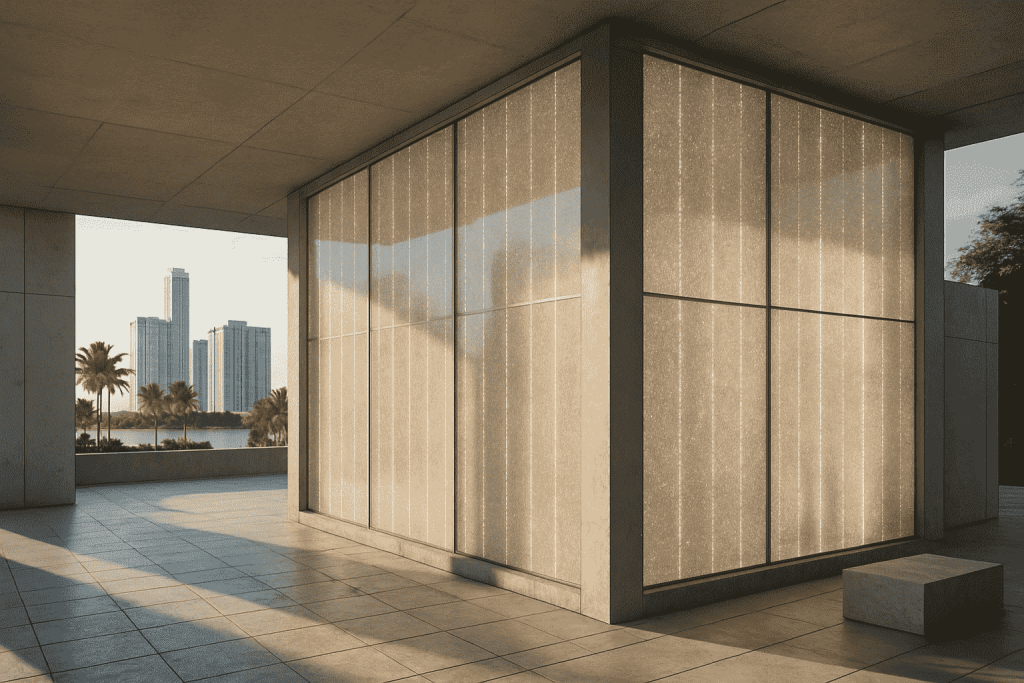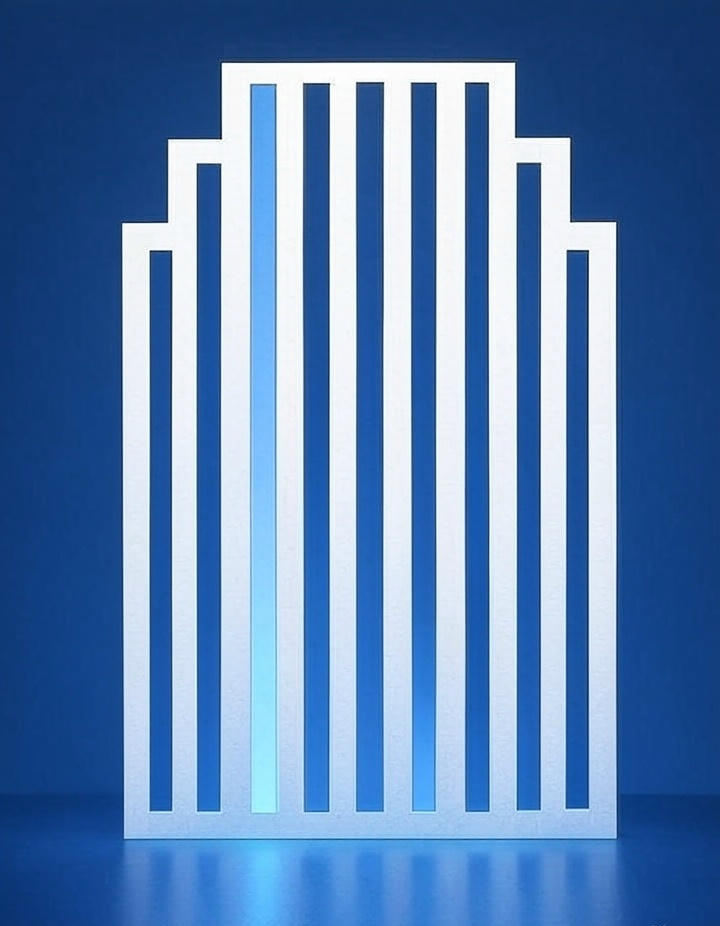Concrete Reinvented
For more than two thousand years, concrete has been the backbone of civilization — from Roman aqueducts to modern skyscrapers. Yet for all its strength, it has always carried a silent flaw: rigidity. Once cracked, it deteriorates. Once produced, it emits vast amounts of carbon.
Now, a global wave of innovation is rewriting that story. Engineers, chemists, and architects are transforming concrete from a passive material into an active, intelligent element of design.

Transparency and the Aesthetics of Light
One of the most exciting breakthroughs is transparent concrete. Using embedded optical fibers or translucent aggregates, this material allows natural light to pass through walls without sacrificing strength.
The result is architecture that breathes — structures that glow softly during the day and emit gentle illumination at night.
In Florida and across the coastal South, this technology is redefining the balance between energy efficiency and aesthetic brilliance, replacing artificial lighting with sunlight itself.
Concrete That Heals Itself
Another revolution is self-healing concrete. This material contains capsules filled with bacteria or mineral agents that activate when moisture enters a crack. Within hours, they release limestone or other binding minerals that seal the damage from within.
The benefits are enormous: bridges and buildings can last twice as long, maintenance costs plummet, and sustainability metrics rise dramatically.
In an age of extreme weather and coastal corrosion, self-healing concrete is becoming essential for long-term resilience — particularly in humid, hurricane-prone regions like Florida. Learn more about climate-resistant building in Florida.
The Carbon-Negative Challenge
Traditional concrete production accounts for nearly eight percent of global CO₂ emissions. But the new generation of carbon-negative concrete is reversing that equation.
By mixing industrial by-products such as fly ash, recycled glass, and mineral waste, or by infusing carbon dioxide during curing, manufacturers create concrete that traps more carbon than it emits. Learn more about advanced concrete manufacturing methods and how 3D printing is changing the construction industry in Florida.
These materials not only strengthen structural integrity but also turn construction sites into carbon sinks — transforming one of the most polluting industries into a potential climate ally.
Technology and the New Chemistry of Building
Modern research laboratories are pushing concrete far beyond its historical limits. Nanoparticles are used to improve density and water resistance. Graphene and basalt fibers increase flexibility. AI-driven monitoring systems measure structural health in real time.
Florida’s emerging innovation hubs, particularly in Miami and Orlando, are collaborating with global material science companies to bring these innovations to market. The result is a new form of architecture that is not static but evolving — learning from stress, adapting to temperature, and even repairing itself.
Design Implications: Form Follows Intelligence
Architects are reimagining what buildings can express when their materials become active participants.
Transparent facades create luminous interiors that shift with daylight. Self-healing structures allow daring new shapes without fear of premature cracking. Carbon-negative foundations redefine what it means for a building to be “green.”
The old rule of “form follows function” is giving way to a new one: form follows intelligence.
Concrete and the Florida Advantage
Few places benefit from these innovations as much as Florida. The region’s climate demands durable, moisture-resistant materials, while its booming development sector demands speed and sustainability.
Developers are already experimenting with translucent walls for public spaces, self-healing marina docks, and low-carbon concrete in luxury coastal villas.
As insurance costs rise and environmental standards tighten, the future of construction here will depend not only on design but on chemistry itself.
The Road Ahead
Concrete is no longer a silent, gray background to our lives. It is becoming a responsive, ecological, and even artistic medium.
The next generation of architecture will not simply use concrete — it will collaborate with it.
In the age of resilience and innovation, the material that once symbolized permanence now represents transformation.

